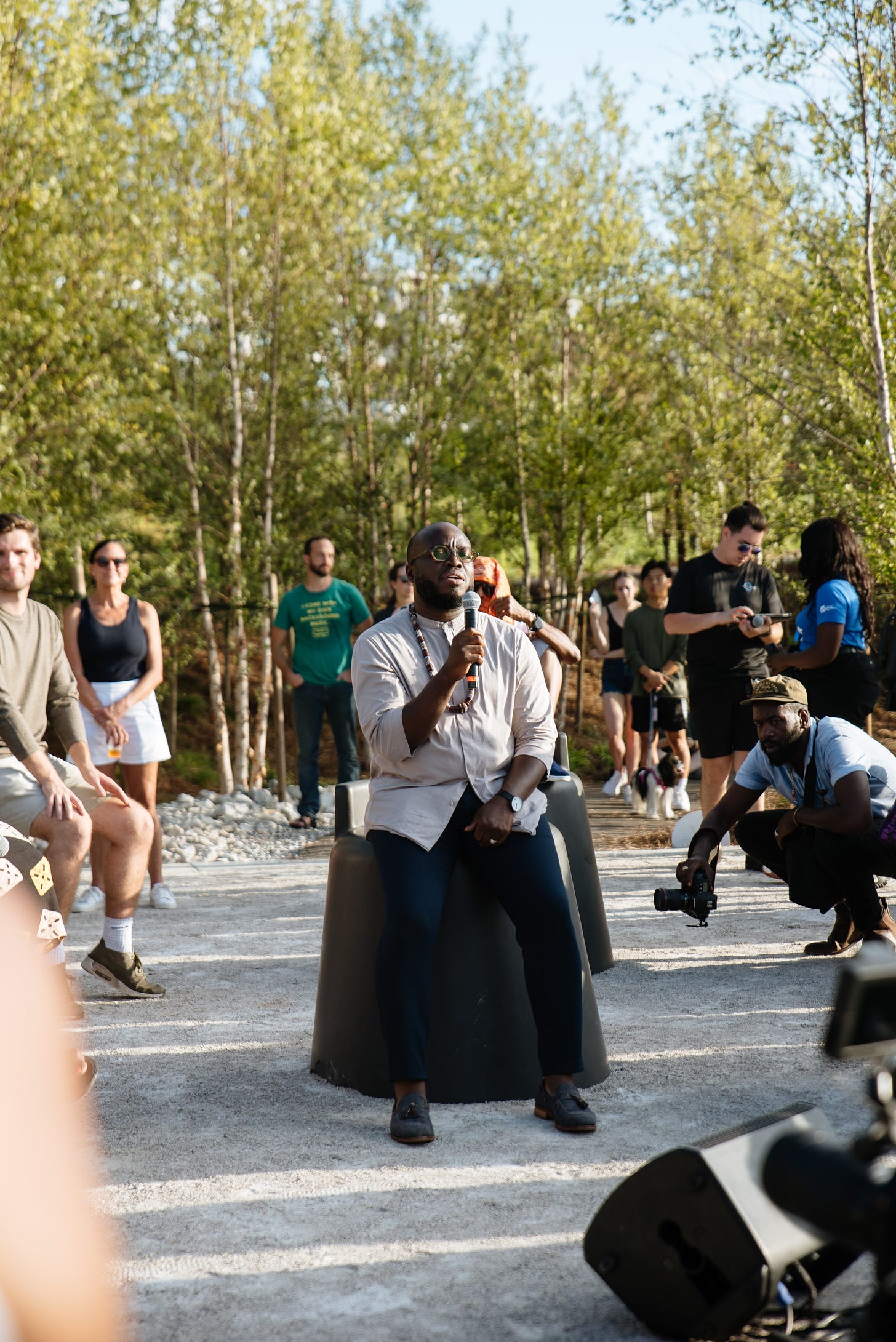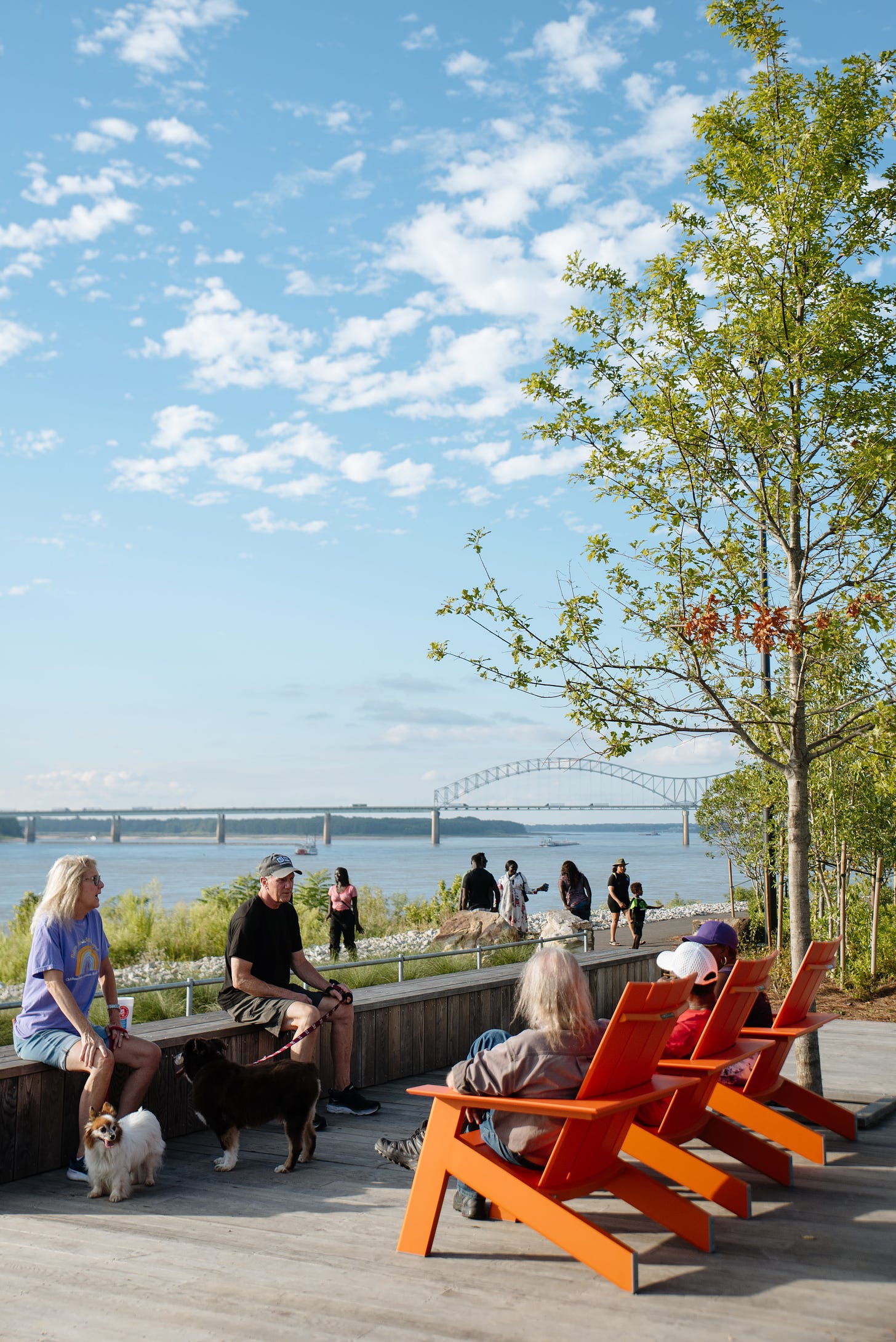#2: Being A Neighbor in Memphis
The Tom Lee Park team from Memphis shares how they foster neighborliness by pushing empathy, searching for shared interests, and hiring from the communities they serve.

One of the highlights of my two-year fellowship at the Bloomberg Center for Public Innovation at Johns Hopkins University was the opportunity I had with my colleague Terrance Smith to work with the Memphis River Parks Partnership (MRPP). Carol Coletta, MRPP’s President and CEO and one of the 100 most important urbanists, wanted a reflection partner for the year before their reimagined park opened. She wanted us to push and inspire her and her team on socio-economic mixing and then publish the results in a case study.
Tom Lee Park carries a lot of symbolism. It is dedicated to the heroic act of a Black man who in 1925 saved 32 White people from the Mississippi in an era when most of these people would not shake his hand. Tom Lee Park is surrounded by some of the wealthiest and poorest zip codes in Tennessee. Memphis is a Black majority city with stark inequalities along racial lines. The park is only a few blocks from Downtown Memphis, which like many North American downtowns, needed revitalization.
Based on our discussions with local stakeholders, the excitement over the park was mixed with concerns over safety and whether “Memphis can have and sustain nice things”. Carol and her team were committed to proving that Memphis deserves only the very best. We focused on finding a language for a great park experience that would be realistic, empowering and inviting.
Before our partnership started, Carol and her team had done a lot of things right. Just from a design standpoint, Tom Lee Park is one of the most impressive new parks I have visited. The design by Studio Gang (master planning, architecture) and SCAPE Landscape Architecture (park design, landscape architecture) leans into the ecology of the Mississippi. The park’s playground designed by Monstrum features Mississippi animals with just the right level of danger and thrill. The park is designed by two women-owned firms and the public art is commissioned from Black artists. 43 percent of the $61 million investment was procured from women- and minority-owned vendors.

Public space research shows that for especially Black park visitors to feel safe and welcome, parks need to incorporate symbols and representation of diversity, such as inclusive programming and signage. Park users’ sense of safety correlates positively with their sense of belonging.
In Tom Lee Park, there is no shortage of symbols of diversity and recognition of the on-going march toward justice. Theaster Gates’ A Monument to Listening, leans boldly into the complex history of race in Memphis and provides a forum for convening. The Sunset Canopy is dedicated to the courage of Tyre Nichols’ family after Mr Nichols was fatally assaulted by Memphis police officers. Mr Nichols, an amateur photographer, used to come to the riverfront to photograph sunsets.


Being A Neighbor
After talking to us and many others, MRPP framed their goal of a successful park experience around a simple yet powerful expression: being a neighbor. As we highlight in our case study, people have a clear understanding of what it means to be a good neighbor. Being a neighbor builds on the willingness to be friendly and engaging, but it protects people’s privacy and does not aspire for continued dependency. A neighbor might not know your name but recognizes that you live around here. Neighbors help out when needed but “don’t get into each other’s pockets”. Sure, neighbors can become friends but the goal of being a neighbor, especially in an urban setting, is to get along.

“Part of our job is to push empathy”
What has impressed me the most in Memphis is how neighborliness is operationalized far beyond branding. Recognizing the concerns around safety but dedicated to building a welcoming atmosphere for all, MRPP made the decision to invest in park rangers, not uniformed security. This policy was informed by an understanding that especially Black park users may not always associate the presence of police with a sense of safety and belonging.
The park rangers have an active role in nurturing neighborly relations in the park. I talked to CEO Carol Coletta, Ranger Lead Jhane Kunkel, Ranger Lead Nicole Heevner and Director of Riverfront Properties Michael Nolan about this work in practice.

What does being a neighbor mean?
Jhane: It’s the bond. Whether they're a stranger or not, making them feel like they've known us forever is really what defines neighborly to me. And ownership. We talk about that as rangers a lot. That this is theirs. I see a lot of people picking up small trash and stuff but they are not upset about it. They are people who actually thank us for what we do, so they're trying to be helpful.
How do you foster neighborliness in practice? What do you do or say?
Nicole: A lot of it is just how you speak. When you're asking people not to do something, most adults have the mindset of why are you telling me not to. It's education through enforcement. Like, hey, to you this might seem like a small thing but you throwing out this piece of trash is setting an example to the hundreds or thousands of people around you. It’s explaining that it impacts our ability as park rangers to do what park rangers normally do, which is build that community because we're stuck picking up after people.
It's finding common ground. Maybe it's the type of music they're listening to. I might actually enjoy that same music off-duty in my car going home but I know that it may not be acceptable to listen to around kids. So I'll approach, hey, I really like that song, or you know, I noticed you're here every single day, how long have you been playing basketball. I mention that I used to play in high school and I really miss that.
Jhane: Part of our job is to push empathy. When we address people about problematic behavior, some are surprised. They didn't realize. Just the gentle approach immediately corrects the situation. It’s pushing empathy saying: hey, here's this situation. If you can get them to put themselves in the other person's shoes in a positive way, it goes a long way.
That empathy thing works too when you know that they know better. You just give them the benefit of the doubt. Like I just watched you intentionally choose to do this but I'm gonna act like you didn't know any better. Give them the opportunity to lie to avoid a bad interaction. Not embarrassing is a huge thing. Because that's where aggression comes from. A lot of times people get aggressive when they're embarrassed because they feel backed up into something.

Would you have an example of neighborliness in practice?
Nicole: The other day I watched a lady let her daughter walk the dog and the dog defecated on the sidewalk. She was just gonna leave it. As she was passing me, I said, were you coming to ask for cleaning supplies. She paused and then she was like, yeah, yeah, actually I was, thank you. And I gave her a pair of gloves and some things to clean it up. She ended up cleaning up herself. Later on she came up and apologized and said, I know you saw that I was trying to leave and I'm sorry about that.
How is neighborliness a strategy for safety?
Jhane: It's routine checks on everything that could be potentially problematic. Making sure that we have rangers visible to reduce the risk of having something happen. Reassuring people of safety, telling that we have someone here seven days a week, 24 hours. Having cameras that are non-invasive. Just the general reassurance without having to be bring in a police presence.
Nicole: Building those relationships with people ends up protecting us. Making sure that we're visible enough that they can walk up to us and ask us if they need something. Like there's a park ranger, let me ask them about this. Or hey, I feel kind of weird, I'm not sure if this person is following me or not, can I just hang out with you for a minute. Letting people know that there's a safe space within the city of Memphis. We do a really good job with our rangers of letting them know that we're not just here to pick up trash.

A lot of public space providers are finding it difficult to find good staff. What does it take to build a good ranger team?
Michael: We try to have people who we know are in the communities that we serve. A lot of the staff we have hired have just approached us in the park. They were using the park, enjoying the park. It also goes to their onboarding and training.
Jhane: A lot of rangers were recruited from different neighborhoods. It's important to have every kind of person represented from Memphis in our staffing.
Carol: It’s looking at community institutions that are working more neighborhood-based and attracting a mix of people. As an example, Jhane had a connection at Memphis Rox, which is a climbing gym, We've ended up hiring young men out of that facility.
Jhane: I can't go there [Memphis Rox] anymore without another person coming and asking for a job. It really starts with our work culture. They're spreading the word about us being a safe, equitable place to work. That is the number one because sometimes [in a park] you're also dealing with the worst of people. Days can be very rough. But if you have the right people with you, you don't feel ill about going in the next day. How we feel about our work radiates off of us and changes the energy in that space.
In conclusion
Tom Lee Park was opened to the public in September 2023. According to a survey, a majority of visitors (57%) reported meeting someone for the first time. A third (31%) reported recognizing people that they had never met. 88% of respondents rated the safety of the park as good or excellent.
Tom Lee Park teaches us that neighborly relations require active nurturing by skilled staff who are connected to different communities in their city. Most importantly, from its design to daily operations, Tom Lee Park demonstrates that recognizing friction is not not the opposite of joy but a prerequisite for inclusion and equity.
That’s it today. Thanks for being here.







